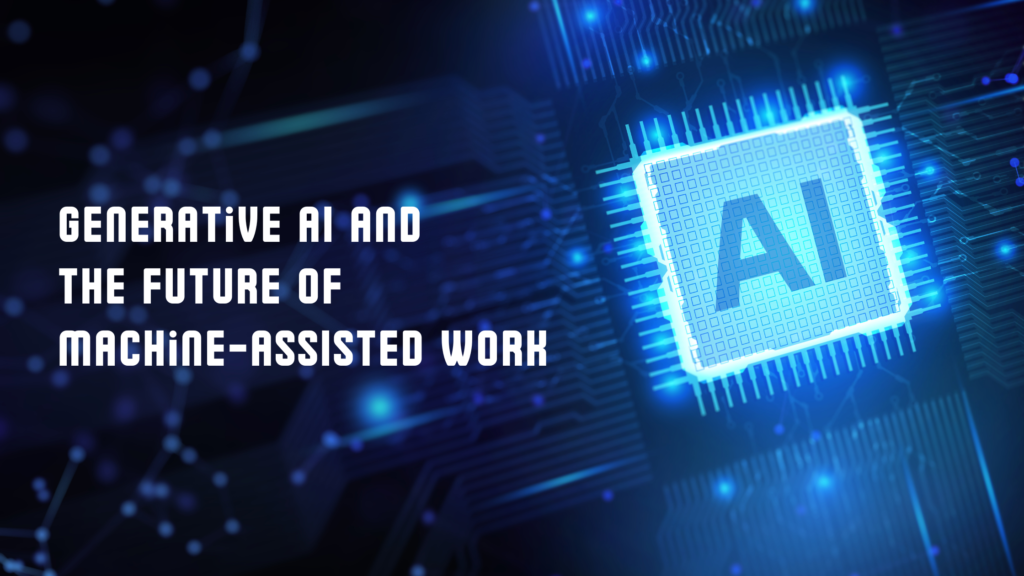The emergence of generative AI has signalled a significant shift in the landscape of machine-assisted work. As we move into an era where artificial intelligence is not just a tool for automation but also for creation, the potential for transformative change in how we work is immense. Generative AI refers to the subset of AI algorithms capable of creating new content, whether that be text, images, code, or even music, after learning from a vast dataset of existing examples.
The first impact of generative AI is on the augmentation of human creativity. With tools like DALL-E for image creation, GPT-3 for text generation, and various AI music composers, professionals across industries can now leverage AI to spark new ideas and accelerate the creative process. Graphic designers can conjure up visuals with a simple text prompt, writers can overcome writer’s block with AI-generated suggestions, and composers can explore new melodies at the click of a button.
This technology is not limited to creative fields; it also promises to revolutionize more traditional sectors. For instance, in software development, GitHub’s Copilot, powered by OpenAI, assists programmers by suggesting whole lines of code or functions as they type. This not only speeds up the development process but also helps in educating novice developers by showing them best practices in real time.
However, as with any technological advancement, there are valid concerns about the implications of generative AI, especially in terms of job displacement. While AI can enhance productivity, there is an underlying fear that it may replace human jobs. This is a complex issue, as history shows that technological progress does not necessarily lead to long-term job loss but often to job transformation. The workforce needs to adapt to these changes by acquiring new skills that enable them to work alongside AI.
One of the most crucial skills in the age of generative AI is the ability to understand and direct AI effectively. This means that workers will need to develop a new kind of literacy in AI capabilities and limitations. For example, someone using an AI text generator needs to be able to craft prompts effectively and also critically evaluate and refine the output.
Moreover, generative AI will likely spawn entirely new professions. Just as the rise of the internet brought forth web designers and digital marketers, generative AI will create demand for AI trainers who can teach models to produce desired outputs and AI ethicists who can ensure AI-generated content is fair, unbiased, and respectful of copyright and privacy laws.
Ethics is another domain where generative AI poses significant challenges and opportunities. The ability of AI to generate realistic content has raised concerns about the potential for misuse, such as in creating deepfake videos. As a result, there is a growing need for ethical frameworks and regulations to guide the development and application of these technologies. This includes ensuring transparency about when and how generative AI is used and developing systems to detect AI-generated content.
The future of machine-assisted work will be characterized by collaboration between humans and AI. The role of humans will likely evolve to involve more complex problem-solving, emotional intelligence, and tasks requiring a personal touch. At the same time, AI will handle routine, repetitive tasks and act as a catalyst for human creativity.
Conclusion
In conclusion, generative AI is at the frontier of a new wave of technological innovation that will redefine the future of work. While it presents challenges that must be navigated with care, it also offers extraordinary opportunities for enhancing human capabilities and creating new avenues for innovation. As we stand on the cusp of this new era, businesses, educators, and policymakers need to foster an environment that embraces the potential of generative AI while mitigating its risks. The goal should be to harness the power of AI to augment human work, not replace it, ensuring a future where machine intelligence acts as a complement to the unique strengths of human intelligence.


